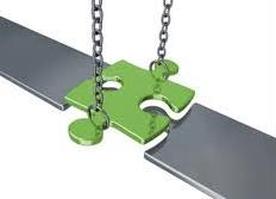| You own a family business, or you’re part of a family business. Maybe you’re the founder or one of the presumed successors. Wanting the family business to grow and prosper, and hopefully thrive into future generations, are natural wishes and dreams. Reality and history show us that not many family companies survive for generations…both from a pure business perspective and because families don’t always maintain unity and support. Long-term success with family-owned businesses is rare and is generally the reward for those business leaders that understand the odds are stacked against them and take proactive measures to help ensure long-term sustainability. |
|
0 Comments
The fundamental lessons underlying the many stories of family business grief and anguish are personal misfortunes that are sometimes unbelievable -- hostility between brothers and sisters, hatred of parents and physical violence that according to one industry legend, resulted in murder…seriously.
On a much lighter note, consider the following ways to shorten the life of your family business. Do you see any of this in your family business?  The last few articles before Thanksgiving reviewed the concepts that planning is not optional and that placing priorities on your goals can distinguish needs from wants and how they incorporate into long-term strategic planning for your family business. Let’s now explore the basics for long-term strategic planning. (Select the "Read More" link below.)
 Nope. Policies Continued. Nope. Policies Continued. Can you believe this guy? Ummm. Yeah. Me Neither! Last week we began explore another area of your family farm business management system as you begin the succession planning process and plan for a successful generational transfer of responsibility, management and ownership of your family business. So, let's explore the need for policies a little deeper.
Job descriptions serve many functions and if this is new information for you…great! If you’ve heard it before and never really implemented anything…well, shame on you. Just kidding. Seriously, this is all about continuous improvement. So, back to job descriptions. In our practice, the unofficial statistics reveal that less than half of our most modern agricultural producers have adopted this as part of their management practices. How can this be? After working with many family farm clients in this area we learned that a common roadblock was that they did not completely understand the need for job descriptions or how to go about implementing the idea. Secondarily, we have also heard feedback that formalized job descriptions were more for non-family business employees and staff. Let’s examine further…shall we? Job descriptions help in daily operations as well as succession planning in a few key ways.
So, the need for job descriptions for your family farm have been clearly stated. Now what? A seemingly difficult, but fairly simple task is to begin by documenting the various tasks and decision-making areas of your family business. There are now two key tasks to perform and listed in the order of importance below…
 You need a process for filling the gaps between the skills possessed by your team and the skills needed for the future. You need a process for filling the gaps between the skills possessed by your team and the skills needed for the future. Oftentimes, the least qualified person on the team is doing something they shouldn’t be, or is tasked with something that they really don’t have the skills to perform. This happens for many different reasons. By determining the qualifications and skills needed for the task ahead of time, it becomes less personal and more objective to assess who should perform what role in your family farm business. Regardless of a transition plan or not, this exercise might help rearrange your team members to perform different roles that they are more qualified to perform. You and your team might become more effective and happier. This exercise also helps show where gaps may exist. Oftentimes, no one is qualified to perform a certain task or area of decision making. So, it needs to be outsourced, filled internally or someone needs to get the training necessary to fill that role. As mentioned above, when looking toward the future and the “stepping aside” by senior management and the “stepping up” by a successor generation, presumably there are differences between the decision-making skills and areas of responsibility between the two generations, with the senior generation having much more responsibility and decision-making authority, along with the associated skills to do so. The gap between the roles each performs today and what you have determined needs to be performed in the future becomes your management transition plan. For example, Uncle Joe and Dad make any land purchase decisions. When Dad and Uncle Joe retire in 10 years, Billy and Susie are going to need to make those decisions. What skills do Dad and Uncle Joe possess today that enable them to make good land purchase decisions (presumably) that Billy and Susie will need to learn to make good decisions in the future? How are they going to learn them? Do they want to learn them? If not, who can they get to fill that role in the future? Does that make sense? Now, carry that line of thinking to all the roles and decision-making areas of the business. It’s just a matter of taking the time to determine the roles, gaps and timelines for gaining the necessary skills for continued success of your family business. To best accomplish this, honest self-assessments, performance reviews, natural strengths and weaknesses and a system for helping flush this all out builds the basis for continuity in operations and accomplishes a formidable task of any succession planning. As you might imagine, we have some various forms and detailed exercise to help you with this specific task. If you’d like a copy, please email me and we can get out to you right away. Until next time, |
Categories
All
Archives
June 2020
Author
|






 RSS Feed
RSS Feed
